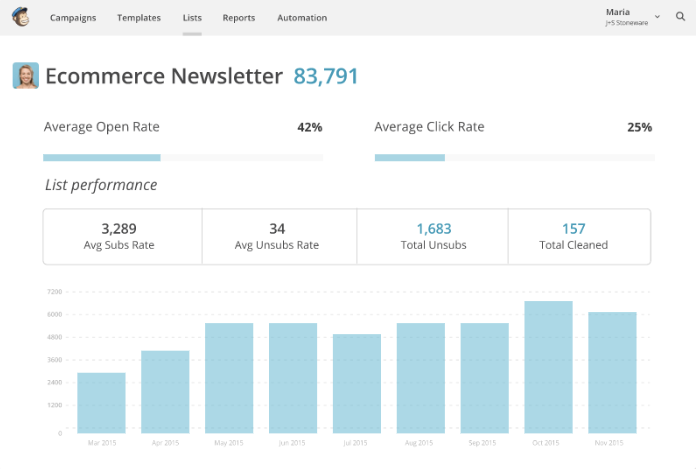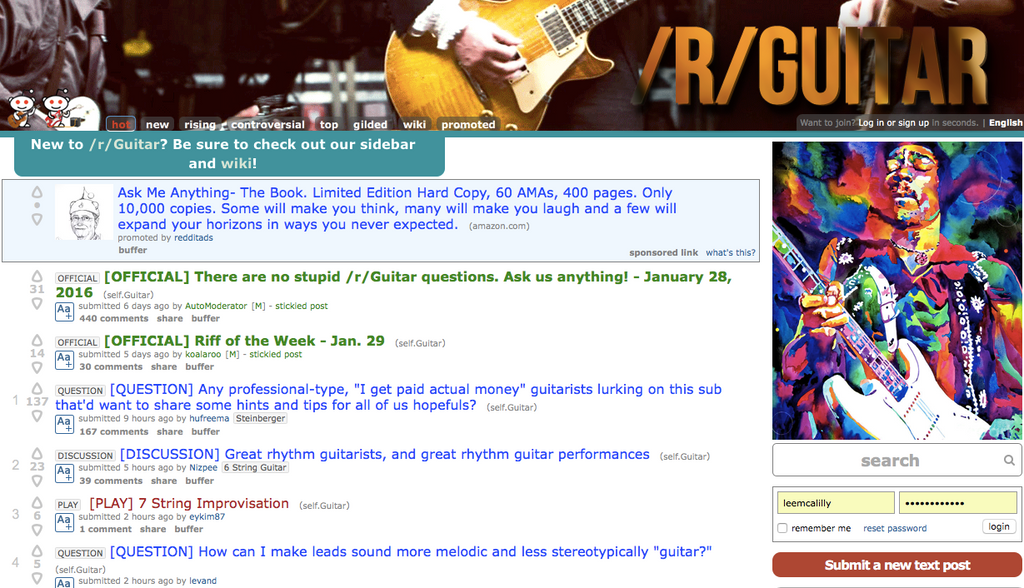Whether you're a guitar store that buys straps from us, a local restaurant, or the next billion dollar startup, everyone starts in the same place: no traffic and a need to get the ball rolling. So I wanted to share my thoughts on what we've learned from our website.
Take it One Drop at a Time
 Launching a new website and getting your traffic going is like using a medicine dropper to put a few drops into a bucket all day long. Every single thing you do takes time and it seems like you're hardly making any progress at first. But eventually the bucket will be full. Years later you might have a swimming pool in your back yard. If all goes well, this momentum will take on a life of its own and start to build traffic for you like compounding interest.
Launching a new website and getting your traffic going is like using a medicine dropper to put a few drops into a bucket all day long. Every single thing you do takes time and it seems like you're hardly making any progress at first. But eventually the bucket will be full. Years later you might have a swimming pool in your back yard. If all goes well, this momentum will take on a life of its own and start to build traffic for you like compounding interest.
Step 1: Start Making Great Content
A site is only as good as its content. People need a reason to visit your website, whether that's a product that you offer, a video you shoot, or a blog post that you write. You can only hope to drive traffic if there's a page on the internet for them to visit that is worth their time and attention. So if your content sucks, then no one will care. Plus, you need to have a specific audience in mind that will be interested in what you're making.
If you're a guitar store, that's pretty easy. You're probably already doing this by providing lessons at your store. The lessons are "content" that you use to lure potential shoppers into your physical store. By helping people improve on the hobby that you're selling, you attract the right shoppers.
The same principle applies to your website, so you need to create content that your target audience will appreciate. If you're not sure who your audience should include, then figure that out first. Once you've got that nailed, spend the time or money necessary to produce something of value. If you're half-assing what you put out there, you're wasting all of your time and money. You'd be better off without a website. You've got to go all in on this to see any return. Much easier said than done.
Step 2: Start Using SEO Best Practices
 SEO is an abbreviation for "search engine optimization." Now there are a lot of people out there selling snake oil related to the term "SEO," but there are some best practices that you should learn. Generally all of the "best practices" are really just things that improve the experience for your visitors. Google rewards sites for quality content, speed, and accessibility. If you're doing something that makes Google's users happier, they'll reward you with more traffic. It's a virtuous cycle because what you do to rank higher in searches also helps improve the experience on your website. Here's a great resource to get you up-to-speed on SEO best practices.
SEO is an abbreviation for "search engine optimization." Now there are a lot of people out there selling snake oil related to the term "SEO," but there are some best practices that you should learn. Generally all of the "best practices" are really just things that improve the experience for your visitors. Google rewards sites for quality content, speed, and accessibility. If you're doing something that makes Google's users happier, they'll reward you with more traffic. It's a virtuous cycle because what you do to rank higher in searches also helps improve the experience on your website. Here's a great resource to get you up-to-speed on SEO best practices.
Step 3: Start Building an Email List
This is really a way to build your own database of customers that is not owned by a 3rd party platform like Facebook or Twitter. It's a consistent way to control your message and routinely engage with your audience directly. While it's not the early days of email marketing anymore, and people have learned to tune out many marketing emails, it can still be a worthwhile way to engage your audience if you consistently provide value to your subscribers. There are several email newsletters that I look forward to every week.

Step 4: Start Promoting Your Site
Now that you're creating content consistently, applying SEO best practices, and writing a regular email newsletter, it's time to stretch your muscles and start promoting your site elsewhere. Start looking for subreddits, Facebook groups, Twitter hashtags, forums, and other networks where your content would be a welcome addition to the discussion. Start reaching out to bloggers and seeing if they'd be interested in you writing a guest post on their site. Experiment with what works and change course as you learn what your audience responds to.
Unfortunately any site that gets significant traffic not only needs good content, but also needs to spend as much time promoting that content as they do writing it. Trust me, I know first-hand that is WAY easier said than done, but it’s the reality of what it takes to grow a website. Check out these good ideas from SumoMe on how to promote your site.

It's Always an Experiment
The word "experiment" is key. Be sure to think of everything you try as an experiment and take the time to look at your google analytics data to see if what you’re doing is actually working. If it works well, double-down on it. As long as you’ve allowed enough time to see whether or not an idea works, then stop doing anything that is not working.
This is Just a Start
These ideas are simply where I would focus my time if I were just starting out. They foundational habits that you should form before moving on to anything else. There's so much more you can do with social media, PR, and content, but it's not worth your effort if you haven't built these muscles first.

The Results You Should Expect
You should be growing your overall traffic at least 10-20% each month if what you’re doing is working. That’s a baseline. You could grow much faster. I’d also check each month to make sure that your organic search traffic, specifically, is growing each month. So long as your email list is growing and your organic traffic is growing each month you’ll be off to a good start.
Recommended Reading
Here is some recommended reading that will get you up to speed. I’ve found these bloggers to be the most helpful in my own content marketing experiments. There is a lot of junk out there about these topics but these guys are not spammy and know what they’re doing.
Neil Patel of QuickSprout
- Neil writes a lot of useful “guides.” His beginner’s guide to online marketing will give you a good introduction to SEO. If you read nothing else, read that.
James Clear
- I’m sharing his site because he does a really good job of using his email list to grow his blog. I would subscribe to his newsletter so that you can see how he uses email first-hand. jamesclear.com
Noah Kagan of SumoMe
- This blog has a lot of good ideas for how to grow your site. sumome.com/stories
Gary Vaynerchuk
- Check out his show, The Ask Gary Vee Show. There's lots of practical, actionable advice in each episode.
- His book, Jab, Jab, Right Hook, is a good primer on finding a cadence between providing value to your audience and promoting your own site or product.

